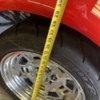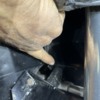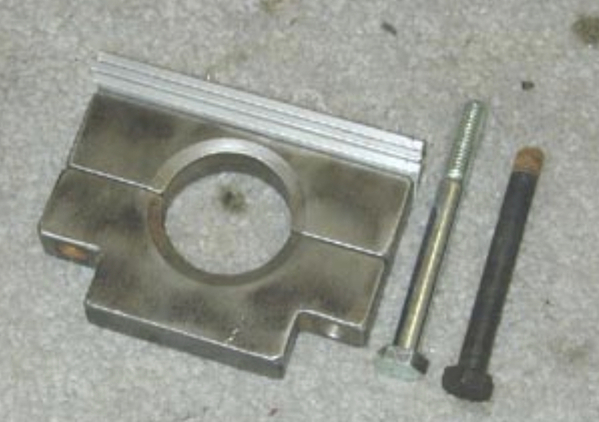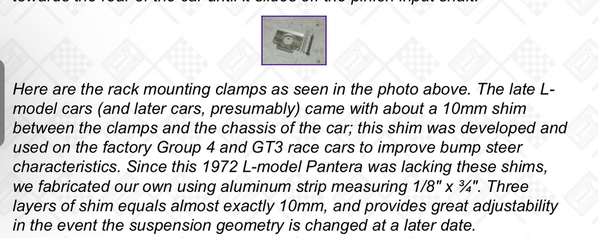I just installed my new adjustable shocks from Wilkinson. I barley have any preload on the springs and they seem to be stiff as a board to the touch 
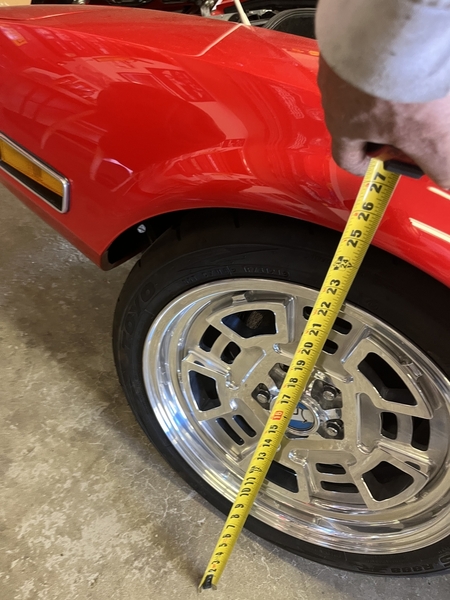 just like my stock shocks. During the R&R took care of my squeaky bushings. I'm measuring the ride height as seen in the pics. The front is at 25" and the rear is 28 and some change. I would think it would look a bit stink buggish but it doesn't. I'm running 235/40-17 and 315/35-17 tires. My toe is way off, how could this be when I didn't monkey with it? I bought one of those 15 dollar camber tools to get the camber in the ball park for the 5 mile trip to the lineament shop, so guess it matters not. Any who, anyone care to put their 2 cents in on the ride height??
just like my stock shocks. During the R&R took care of my squeaky bushings. I'm measuring the ride height as seen in the pics. The front is at 25" and the rear is 28 and some change. I would think it would look a bit stink buggish but it doesn't. I'm running 235/40-17 and 315/35-17 tires. My toe is way off, how could this be when I didn't monkey with it? I bought one of those 15 dollar camber tools to get the camber in the ball park for the 5 mile trip to the lineament shop, so guess it matters not. Any who, anyone care to put their 2 cents in on the ride height??
Replies sorted oldest to newest
You need to drive it around the block a few times to make the shocks take a set.
IF your toe is way off at this ride height (toed out) then you need some bump steer help.
Check to see if you have the 10mm shims under the steering rack. That was the factory "fix" for the toe out at full upper travel.
I don't think that you can entirely eliminate toe change but the new spings and shocks most likely will not permit full up and down travel so that will reduce toe out changes.
3/16 to 1/4" TOTAL toe in at normal ride height is a good number.
The top of your fender openings should be even with the top of your tires. Keep driving around the block until the suspension settles there.
Wilkinson should have given you a good starting height for the shocks. He should know better if he didn't. The problem with him is he isn't a mechanic at all. You'd be better off with Chris at SAC Restorations. They actually can pre-set this stuff from their own car and experience.
Agreed on driving it around the block to get t it to settle, but looks like you are ready for some off road 4x4! How far up the shock body do you have the spring perch set? What shocks does Wilkinson sell and what are the compressed and uncompressed lengths? What spring rates did he supply?
You'll probably need to go with zero preload and wind the springs down on the perch to drop the height, then to avoid the springs coming unseated over potholes etc. you'll want some helper springs to take up the slack. Some vendors suggest to zip tie the spring to the upper perch, but that's a half assed solution IMO.
The toe changed because your ride height has changed significantly, did you measure the ride height with the old shocks to see where it sat, so you could target that with the new shocks?
Of coarse I didn't measure the height of the old shocks. The springs are 400 and 450.
Stock shock length is to long using a modern shock with the lower ride height everyone runs. 400 for the front is also to stiff. We have sold hundreds of shocks and have dialed in the perfect shock length and spring rate to illuminate spring problems like what you are describing.
Donny, now that the shocks are on the car you can use the spanners that came with the shocks to turn the spring seat rings and lower the car to your desired ride height. When you installed the shocks, you likely had the rings snugged up to the springs to prevent them from moving around.
You need some preload on the springs or they will unseat if the shocks become fully extended. If you want to go lower, you need different springs, shocks or, as Julian suggested, helper springs and spring guides.
Also, the spring rates strike me as a bit odd. The springs support the weight of the car, so the rates should reflect the normal F/R weight distribution. You shouldn't be using springs to tune the ride firmness or handling characteristics. That's the job of the shock absorbers.
It looks like QA1 has a solution to fill the gap if the car is lowered:
https://www.summitracing.com/p...BEAQYBiABEgLQ1PD_BwE
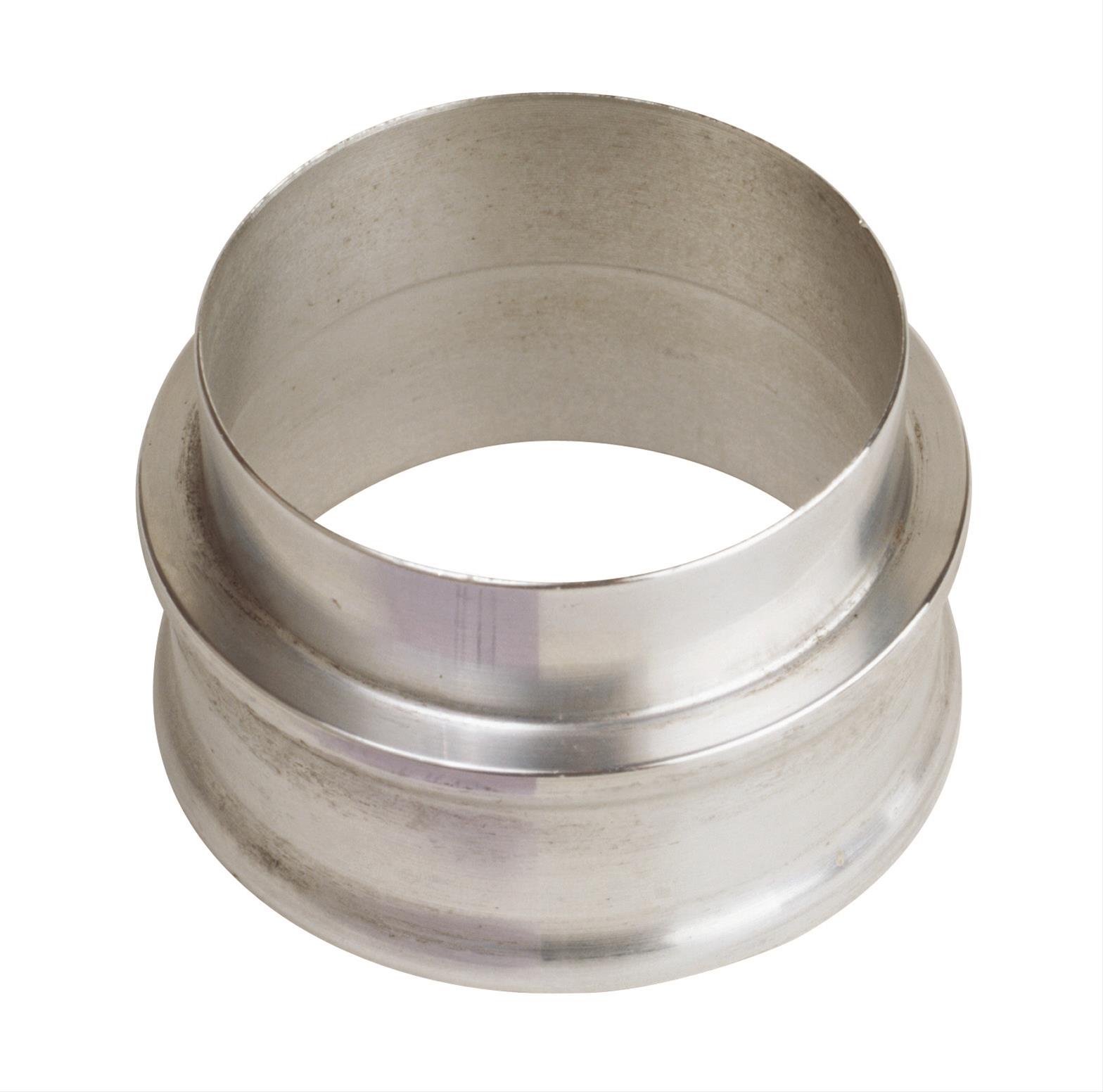
If you fill the gap, the ride height will raise by the same amount. The problem is the shock is TOO LONG.
Helper springs will help or the other band aid solutions may work. But the real problem is the shock is to long for the ride height desired.
Agreed. The spacer does nothing to solve the gap problem. Thanks for pointing that out.
The over all length of the front shocks are a 1" shorter than the stock shocks and the rears are .2" longer than the stock ones. I have another question, My car is a early 71 and from what Steve told me ford didn't put shims in or on the steering rack until 72 to help with bump steer. Steve said to make shims 1/4" to 3/8". It looks like this will require relocating the steering braket and drilling four new holes. Tell me if I'm on acid or not. Here are the pics.
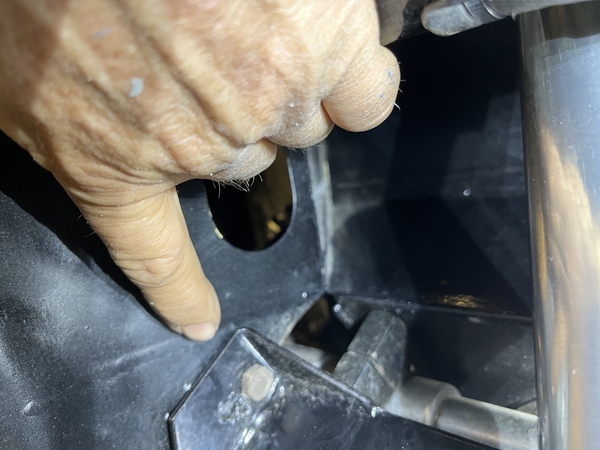
Attachments
Spring rates and wheel (spring) rates are different. Wheel rate takes into account the suspension geometry. The length of the A-arm from the inner mounts to the shock mount, the length from the shock mount to the tire contact patch and the inclination of the shock along with the spring rate gives you the wheel rate. There are wheel rate calculators on the internet. Spring rates are determined by vehicle weight, suspension geometry and dynamic and areo loads. Shocks control everything. Shocks are a lengthy topic for another day.
For our race cars shock tuning was 75% to 80% of suspension adjustments.
Ideally you do not want that gap. I have not done the math for stock Pantera A-arms and wheel widths but 400 pounds seems a little high. zr1 is correct in saying your shocks are probably too long. Keep in mind that you can get 400 Lb springs that are 10 inches long and 400 Lb springs that are 14 inches long and practically any other length. I suspect your spring/shock package is not correct for the car.
Unless EVERYTHING is stock you must first establish the ride height that you want to live with and work from there. Them measure the distance from shock mount to mount. Then do all the math for the correct spring rate. Then determine the max bump and droop to determine the shock length. Then get the shocks valved accordingly. That will get you in the ball park
OR
Call zr1 for the correct spring/shock package.
Just my 2 cents
I think I have the right ride height in the front, top of the tire to the top of the fender well with the shock loaded like Doug said. Steve said he has sold this shock and spring combo forever and that they are plug and play and tend to believe what he says due to his experience plus, I'm stuck with these shocks because I can't afford to be the Imelda Marcos of shock absorbers with 2,000 sets in my closet. It's best to have the steering rack level as possible, correct? In order to shim the steering rack down, I will need to relocate the bracket, right? It looks like someone has already drill holes in the bracket a long time ago but not the frame. The way I see it it will require one extra hole in the bracket and one in the frame on both sides. Has anyone have a pic of this procedure? It looks like the bracket serves two purposes, adding strength and rigidity to the frame and a extra attachment point for the rack. It's OK to say, you don't no WTF your doing or slap me threw the computer, I can take it.
That isn’t the rack mount you’re talking about, it’s a reinforcement. Look at Larry’s posting above. That’s the rack mount and there’s 2 of them.
Donny - you bought the shocks from Wilkinson right? I'm confused as to why he would not know the proper components for Panteras???
Donny, I would see if you can return the shocks and call zr1 for his set-up. That is what I did. For Bump steer you can also change out the tie-rods and add Heim joints and an extension. pm me and I can give you more information. No mods needed.
You don't re-drill the bracket. Look at the picture of the two piece bracket posted. On my car I did need to shave it, clip one of the corners to get it to clear of the battery box after being shimmed down. It's very tight in there.
In my case I had to switch to Allen socket screws on the close side. I wasn't able able to get a socket on a hex bolt because of the battery box ? There isn't enough room for it.
Check your ground clearance in the front, under the radiator support. If you can make a fist and slide it under, you're ok. If you can't, you're too low. You will wind up tearing out the sheetmetal or even the radiator support bottom on a curb or manhole AND even so, you will now need to be more aware of road obstructions wherever you go from now on.
Whatever you do, don't let a numb nuts, even a valet drive the car for even ten feet UNLESS you are prepared for fifty to a hundred thousand dollars worth of body and chassis damages.
1)-First Rule of suspension modification: EVERYTHING YOU TOUCH IN THE SUSPENSION AFFECTS WHEEL ALIGNMENT. Expect to play with all aspects of front & rear wheel alignment regularly if you continue to perfect your Pantera.
2)- factory bump-steer spacers (mid-'72-L model onward) are the metric equivalent of 5/16" thick but every 50-yr old Pantera will vary a little in what they really need.
3)- The rack steering rods should be parallel to the ground. Rack body alignment is not critical. Its easiest to adjust the rods for alignment where they attach to the steering arms. This is most easily done by replacing stock tie-rod ends with 1/2-20 SAE thread Heim joints with Ford-taper end studs, in unaltered steering arms. By coincidence, SAE thread Heims will screw onto stock metric thread steering rods with no alteration needed.
4) Stock suspension spring strengths were something like 200 lbs/inch front & 220 lbs rear. You have a semi-race spring setup, not a comfort setup. Springs are available everywhere in 10 pound-inch variations. Select spring lengths to fit your shocks.
5)- Adjustable shocks should be set for lighter damping at the front & heavier at the rear due to about 60% of the Pantera's weight being in back. The shock's bump-rubbers should be blunt-ended in front for 1/2" more travel & conical rubbers in back for less expected travel. .If yours are reversed, swap them.
6)- when using hook-spanners to adjust spring seat height, its easier if you decide what you need as an adjustment and jack up that wheel to take the weight off it. Do NOT oil the threads to make adjustment easier; it attracts dirt and road grime.
7)- Some adjustable seat-shocks have allen setscrews to lock adjustments, so slack them off before you attempt to adjust height or you can tear up the shock threads..
That should keep you busy for awhile, my friend. There are far more things possible to adjust (caster & camber, anyone?) but you have a nice start. Remember, ALL the above will change wheel alignment so the more changes you do at once, the less times you'll need to get a pro realign.
Boss. What size tappered pin does the Pantera use? I'm going to order the parts for this mod. I like the idea.
The rod ends would be female, correct?
You are wise Boss Wrench.
If you’re replacing your tie rods with Heim joints, make sure they’re Teflon lined and buy high quality, high strength items. I recommend Aurora. This is one place where you don’t want to go cheap!
We're talking about something similar to this, correct?
https://allstarperformance.com...ge?q=ball+joint+stud
-OR-
https://www.speedwaymotors.com...ud-to-Heim,3333.html
-OR-
Its a 7 degree taper, known as 'Ford Taper. Sold by Speedway Motors and others for dirt track racing, Ford (and Chrysler) ball joints are also 7 degree taper. I made mine from old ball joints and a lathe:straight stud on one end, tapered stud on the other so the steering arm need not be drilled out.
Mr Paschetto, that Speedway stud is it exactly. I see the price has doubled since I added them 10 yrs ago. To level the steering rods for bump-steer adjustment, once you have the studs, one only needs spacer-washers and a carpenters level.
Yes- the heims are female thread and screw on by hand, with a jam nut. They retain stock toe-in adjustment capability. I add heim-joint seals for some weather protection. They're pairs of conical neoprene washers that cover the ball on both sides. Not as elaborate as the full rubber jackets like on Mangusta suspension, but adequate. I think I got mine from Pegasus Auto Racing in Wisconsin. They specialize in formula car parts.
Thanks but not so much wise as poor and trained as an engineer. My whole reason for all the suspension mods was to make the car safer for my wife to drive anywhere, any time.
Boss, do you approve of the CJ pony parts kit? I like it cause it's here in my neck of the woods and available.
haven't ever used them- sorry
@Donny Dotson posted:Boss, do you approve of the CJ pony parts kit? I like it cause it's here in my neck of the woods and available.
He is not particularly known for selling the highest quality parts. I looked at the kit. He is not spec'ing things like 4130 chrome molly on the stud or the rating of the rod ends.
It looks to me the CJ pony stud doesn't have much adjust ability because of the shoulder. It seems you would need to pull it up as far as possible to get the rack level. Has anybody used a or does any vendor offer a stud and heim kit?
The CJ Pony Parts stud is the best design of the three mentioned. With the other two, if you adjust the Heim joint away from the steering arm, the Heim will be in direct contact with a threaded portion of the stud. The CJ stud uses spacers to move the Heim further up the stud, so it’s never in contact with threads. If you want the Heim to be in its lowest position, the spacer sits above it. Unfortunately, the Heim joint and adapter appear to be too long for a Pantera application.
I'm such a retard , I've been under this car and looked at the ball joint 7000 times and had it pictured in my mind that the TR end was below the control arm. Part numbers or a vendor would be appreciated, I need to go ream on this car ASAP before they outlaw gasoline and the world ends.
You can get spacers separately. There are no premade kits that will fit the Pantera. You need to get two 1/2"-20 female premium chrome molly rod ends with 5/8" bore and an assortment of chrome molly spacers.
All of the "kits" are using male rod ends and threaded tubing. That makes the assembly too long to use in the Pantera.
So, use the speedway studs and source the heims from Pegasus or Aroura? I have no experience with heim joints.
First call Maximum Motorsports and see if you can buy their Mustang kit without the Heims and adapters.
Donny, Have you checked by measurement to see if your car has excessive bump steer? I’m not far enough along on my car to check yet but I know from experience designing suspensions that steering arms being parallel to the ground doesn’t automatically equate to no bump steer. Maybe it does for P-cars at a specific ride height. It’s fairly easy to check and should be checked anyway.
@racecarmike posted:Donny, Have you checked by measurement to see if your car has excessive bump steer? I’m not far enough along on my car to check yet but I know from experience designing suspensions that steering arms being parallel to the ground doesn’t automatically equate to no bump steer. Maybe it does for P-cars at a specific ride height. It’s fairly easy to check and should be checked anyway.
The question has been asked before, "what is excessive bump steer"? We are looking for a number, not a description of what it is. Zero would be perfect but probably not possible, so what is an acceptable number?
I've looked as much as I can and there is no one that I know of that is quoting an actual number. They just speak in generalities.
IF someone is going to all of this work, and measuring bump steer is labor intensive, don't do it before shocks and springs, do it after.
There are a few race shops that deal in suspension components. Pegasus is just one of them and a good source, but Davids concern of using an adjusting nut instead of solid spacers is credible, but you can get the spacers separately also so you can use the Speedway studs, just plan on spacers as well.
I might suggest also that if you are going to go to this extent then get the sphere ball anti-sway bar ends and do them at the same time.
Mike is correct when he said that this is a lot of effort to go to, without really knowing if you have a bump steer issue. You should start off with the rack spacers, then go from there.
Also, my issue with the Speedway stud has nothing to do with spacers vs nuts to locate the rod end. If you do indeed need to move the rod end higher on the stud, do you really want it acting on a threaded portion? Eventually, the threads will be crushed and the result will be slop in the steering.
As an aside, years ago, Gary Walker (Comp2) told me the Pantera’s steering rack is too long to ever have zero bump steer.
@davidnunn posted:Mike is correct when he said that this is a lot of effort to go to, without really knowing if you have a bump steer issue. You should start off with the rack spacers, then go from there.
Also, my issue with the Speedway stud has nothing to do with spacers vs nuts to locate the rod end. If you do indeed need to move the rod end higher on the stud, do you really want it acting on a threaded portion? Eventually, the threads will be crushed and the result will be slop in the steering.
As an aside, years ago, Gary Walker (Comp2) told me the Pantera’s steering rack is too long to ever have zero bump steer.
I have no argument with anyone here. Maybe we can persuade Bosswrench to post some pictures or details of the stud that works best?
I can't say that the rod end is going to need to be raised to the threaded portion of the stud so only someone who has actually done this could answer this.
I'm sure that more then one person has but I only have the Boss to ask for that information.
Measuring the toe in/toe out changes during suspension changes in the front is also cumbersome to say the least AND changing spring and shock rates may make the changes at maximum travel up/down almost irrelevant?
David. If the rod end needs to possibly be shimmed up with spacers, how can it be kept off of the threads? That isn't possible without a specifically machined stud, but that would remove the possibility of adjustment, up or down?
I'll see what I can do, when the snow melts. Maybe revisit those old articles in the Newsletter. The biggest source of funny steering problems seem to occur when you change the front ride height- even removing the front coil-over spring spacers will do it. The rack moves up/down with the body relative to the ground while the rod ends are fixed in height off the ground by the wheel and tire sizes.
Rack spacers do two things because that surface they bolt to on the front of the trunk floor is at about a 45 degree angle. So rack-spacers on a front-steer Pantera move the rack forward which changes bump-steer and Ackermann-toe, while they also move the rack down, which also modifies bump-steer. Hard to keep all this stuff straight in one's mind unless your name is Dallara.... And of course, street guys may not even notice.
Changing shocks has morphed into a major suspension geometry project!!
Interesting discussion!
@Rob Fridenberg posted:Changing shocks has morphed into a major suspension geometry project!!
Interesting discussion!
Yes but all considered, is worth the discussion. If you are going to mess with the bump steer, when you do the shocks and springs would be a good time to consider it.
What was available 25 or 30 years ago is not necessarily what is available now.
At this moment, it does not appear that Aurora makes that combination of a rod end. If I am understanding this correctly, it's a 5/8" bore and an 1/2"-20 thread. None of the suspension shops I've talked to SO FAR have it or see it as available.
That MAY explain why so many of the "kits" are adapting a male rod end with that double threaded sleeve?
I'm aware that the rack centerline moves forward 3/8" shimming it down 3/8". I saw that up against my battery box and had to clip that corner and switch to a socket head bolt.
It is entirely possible that on a street car this is just an academic exercise in futility but at the moment gives me something to do in laying out the details.
I do not look forward to measuring the bump steer. That ain't fun.
Generally speaking, you do not want bearings or bushings to be substantially on threads. The more load, the more it's not good practice. We go through great lengths, by using AN bolts, to keep everything on the shank, including mounting tabs/brackets and then use spacers/washers then nuts.
Doug, Like almost everything to do with suspensions, there is no one magic minimum bump-steer number. Less is always better. Yes, the ideal is zero but that MIGHT (not likely) be obtainable through a very short part of the range of travel. Anyone that hasn't looked at a bump-steer curve should do so to better understand what's going on.
Furthermore, a number is somewhat meaningless unless the method of measurement is defined. Ideally the steering angle introduced by suspension travel should be kept to a minimum. The condition and compliance of the suspension system can affect the accuracy of the measurements and whether or not the driver can sense some bump-steer. Excessive B-S will be felt.
By nature suspension systems are dynamic and things can change quite a bit through the range of travel. To make things more complicated, what the driver senses can be influenced by many things.
The spring/shock system has nothing to do with suspension geometry other than limiting the travel in both bump and droop. Once you start modifying a suspension system you really need to check everything for max performance. Changing ride height and the wheel/tire package can effectively changes where in the travel range the suspension is operating which will change alignment (as BOSS said) and preferred settings. The good news is that minor changes may not be that significant for a street car with street rubber. An alignment will be necessary, as BOSS said.
The car was designed around a static ride height and specific tire diameters. If you significantly deviate from that thing can change including optimal wheel alignment specs.
Donny, In your case having a popular wheel/tire package is a good start. Next determine the static ride height. As a broad rule of thumb don't go lower than what keeps the effective lower front A-arm parallel to the ground. Important: meaning imaginary line from about mid-point between inner mount to center of the ball joint. If the inner A-arm mounting points are higher than the center of the ball joint, that can be acceptable. If they are lower, then you can have excessive camber gain through upward suspension travel which is generally not good for street cars. Then you have to make some decisions. How low can you live with. How stiff (higher spring rates) a suspension do you want to live with. Is the car for show or go. Aesthetics are important to many people. I think we all like low but banging on the road gets old very quick. Shocks/springs and bump-steer adjustment come next. Enjoy the learning experience.
I have call around including Pegasus,1/2" heim w/ 5/8" bore do not exist, I even tried off road shops. You can only get 1/2" and 1/2" or 5/8" and 5/8" WTF! I guess it's plan B. Steve said in 71 when the first cars were delivered, Ford installed shims on customer cars due to complaints. My car is has all stock steering and I haven't hit any big bumps or pot holes but, the dips really affect the car. At first I thought this car had a bent A arm or other jacked-up suspension component. After disassembly, cleaning and closely checking everything I'm sure It's the position of the rack. I guess I'll drop the rack and see what that will do not unless somebody knows where to get the right stuff, Hiem joints are the ticket.
Thanks for the reply. I agree about the rod end on stud threads but the only way you could stay off of the threads would be to use a hardened sleeve over the threads and probably the shims. That capability is not in the design of any of the readily available "ball joint studs".
Again, we don't need to speak in generalities here. We are speaking of the Pantera by folks who have raced the Pantera. Yes on all suspensions as the hub rises and falls, there is a change in toe since the hub center is acting through an ark.
The point here is that since we are talking specifically Pantera, the change without the shims is know (known by someone) and the improvement using the shims is know by someone.
In addition, going through the BossWrench modification, the improvement IF ANY is known by someone.
If an 1/8" change is stock and it can be reduced somewhat with lowering and further improved by the additional BW mod that would be nice to know in advance.
It isn't a criticism of anyone here, I'm just pointing it out that it is under these conditions, no longer just a generality, the numbers are known.
In my GT350, when I lowered the upper a-arms in what is called the "Shelby modification", the bump steer change was horrendous. The car would hit a bump and change lanes suddenly and harshly. That originally was with bias ply tires though and radials reduced if almost eliminated the jerking steering wheel.
I installed a "bump steer eliminator kit" and there is no felt reaction to the steering wheel now.
I'm going to take a guess here and say that the BW modification is most likely unnecessary on even a hard driven street car, but I don't know that as a fact, but it with be nice to know (translated as: I suppose it would amuse me).
This thread unfortunately has suddenly gone no where fast.
FWIW, I use 1/2" thread by 1/2" bore heims in my steering, along with 1/2" taper/straight studs. No real reason to use a heim-thread that's smaller than the stud its attached with.
The Pantera is built with rather light-appearing front suspension parts. Compare a Pinto front spindle pr steering arms to a Pantera spindle & steering arms, and you may be shocked. Yet average Panteras still survive racing LeMans (Classic), monstrous-oversize engines and 50 yrs of 'vigorous' street driving.
I personally do not use teflon lined joints in areas that are likely to pound out. I've lost a few, which convinced me to avoid them. I use premium all-metal heims. YMMV, as always.
I just measured the stud diameter on the tie rod end to steering arm on my car. It is 10 mm. That would be a 3/8" stud to use then. 1/2" stud would be too big.
Those I can't find at all.
I went ahead and shimmed the rack per Steve's advice. I asked him about putting hiem joints up front and he said, "YOU'VE BEEN ON THAT PANTERA FOURM, HAVEN'T YOU?!?! YOU CAN DO WHAT YOU WANT, BUT THIS IS WHAT I WOULD DO.... Shim the rack a 1/4", no wait, make that 3/8"." Using 1/8" x 3/4" alum flat bar, I made my shims, grabbed some longer bolts and put it back together. Has anybody ever had one of the rack mount welded backing nuts break loose? They are almost impossible to get out. The rack is dead nuts level when loaded. I will see how it acts tomorrow. BTW, I just took on a young person as a helper to help me on all my projects. S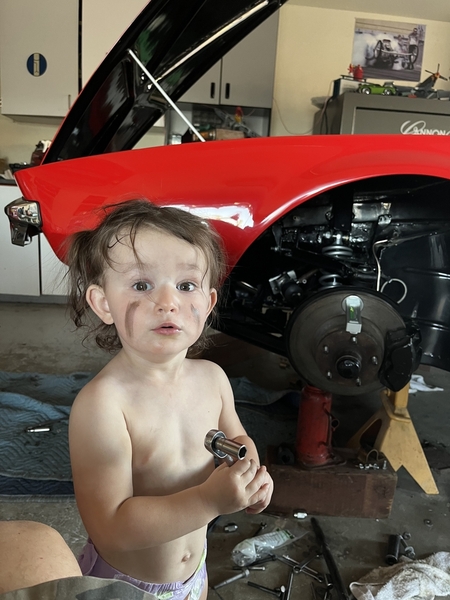 he's very eager to learn and not afraid to get dirty.
he's very eager to learn and not afraid to get dirty.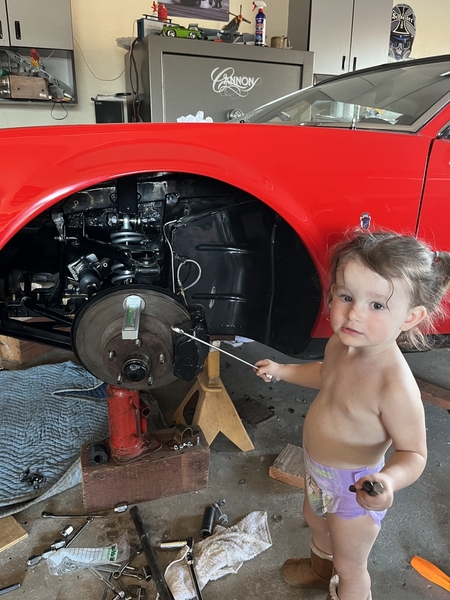
Attachments
@Donny Dotson posted:I went ahead and shimmed the rack per Steve's advice. I asked him about putting hiem joints up front and he said, "YOU'VE BEEN ON THAT PANTERA FOURM, HAVEN'T YOU?!?! YOU CAN DO WHAT YOU WANT, BUT THIS IS WHAT I WOULD DO.... Shim the rack a 1/4", no wait, make that 3/8"." Using 1/8" x 3/4" alum flat bar, I made my shims, grabbed some longer bolts and put it back together. Has anybody ever had one of the rack mount welded backing nuts break loose? They are almost impossible to get out. The rack is dead nuts level when loaded. I will see how it acts tomorrow. BTW, I just took on a young person as a helper to help me on all my projects. S
he's very eager to learn and not afraid to get dirty.
No one said that shimming down the rack wasn't going to put you about where you want to be.
In lieu of a detailed text it's really impossible to determine if going to a stud and heim end will give better results. Heims are not what you really want to use on regularly driven street cars. They have no where near the longevity of a stock ball joint or a tie rod end.
They are also know for their harshness.
To me this was just a technical discussion on how to do it but lacks the technical documentation of what the results would be.
That really requires a "text" on the subject and is unfair to expect anyone to write one on just the drop of the hat BUT the thought is out there...somewhere. ![]()
I've worked with NASA guys and to be honest, they are a lot pissier then some of the knowledgeable here and probably a good deal more secretive. In the world of ulcers, they are what medical people call "carriers".
P.S.: don't invite any of them to your barbecue. They'll bum everyone out.![]()
The kid needs to hit the gym. He needs some toning.
Good for you for trying stuff, and for bringing the younger people into the world of automotive!
Rocky
I wanted to put hiems on because it was easier and more adjustble but, you can't install what you can't get. Removing the rack and adding shims was a job I just didn't want to do and then one of those backing nuts came loose causing more grief. One good thing came of this, it cost less than 10 bucks to have the same outcome.
Donny, You did the right thing installing shims per Steve's advice. If the adjustment substantially reduces the bump steer that you were experiencing then you are good-to-go, unless you care to measure what you now have and try improving it further with more adjustments by using measurements. You might or might not "feel" additional improvements. A lot depends on what you are comfortable with. If your sense is that the shimming has eliminated bump steer then you found the number that works for you and your car setup.
Sorry for the suspension geometry 101. Apparently that offends some people. It's my nature to thoroughly understand a mechanism before I start modifying it. It's sometimes easy to put the cart before the horse so I share what I know in hopes to be helpful.
BTW, Great to see you found a willing helper. Give him a few years and you will be his helper ![]()
Love suspension geometry 101!! There are so many factors involved in tuning the dynamics of a car. Even the wheel design (and tire), which has its own spring rate, can have an effect. On one of my car programs, the wheel design/stiffness needed to be revised to resolve an issue with the suspension tuning. The studio was not happy with us!
The computer has made suspension modeling/analysis so much more precise - I recall we started using it in the mid-Eighties.
Is the bad bump steer common with Panteras or an issue related to Donny's car set-up??
Bump steer is common with cars. The Pantera is unusually adjustable, having come from a racing background. Plus, often having sensitive steering and sensitive owners who care. Removing as much of the stuff that makes you uneasy, increases your enjoyment of the machine, in my opinion.
...Heim Joints?? Are You building a Racecar?
I HAVE Absolutely NO Bump-Steer at speed on the Freeway. And I have Multiple Cockpit Videos to Prove It! No misdirection of the Pantera, No steering wheel Movement, And NO need for a 'Correction' in the Steering, when hitting Severe Bumps, multiple times!
All I did, was to Install after-market shocks (Hall), adjusting the height I wanted, make sure both shocks were set Even (Dial Calipers), test drive to settle the springs, re-check height...After, I installed a Pair of 3/8" Stainless Steel Bar 'Anti-Bump-steer' Spacers under the Rack. I use to Machine these, and a few of You have these in Your Panteras. That's all I needed. Of-course, get a 'front-end alignment'.
I don't get all of the Complications of suggestions going on here? You don't even know yet, if you have bump-steer.
A few points:
Teflon Squeezes Out!
Doug is Right! With a 'Lowered' Battery Box, things get very tight around the Steering Mount Bolts.
The Most Important and 'Delicate' set of bolts in the entire Pantera (rack mounts), and one would put 3 aluminum Shims Under them?? Not Rigid, and prone to slipping and loosening, Not to mention Corrosion. As a Machinist...I say, one would be 'Out of Their Minds'!
You're going to do what you please, but keep it simple. The More complicated you make it, the more Likely the Components will NOT 'Compliment' each other. KISS
Good-Luck with it!
MJ
...had to come back and mention, I had previously installed the TRW Racing Steering Rack, long ago sold by Roland in Germany. It has a 10% Faster Ratio. Works Beautifully, and I don't care about any immeasurable increase in steering effort.
@marlinjack posted:...Heim Joints?? Are You building a Racecar?
I HAVE Absolutely NO Bump-Steer at speed on the Freeway. And I have Multiple Cockpit Videos to Prove It! No misdirection of the Pantera, No steering wheel Movement, And NO need for a 'Correction' in the Steering, when hitting Severe Bumps, multiple times!
All I did, was to Install after-market shocks (Hall), adjusting the height I wanted, make sure both shocks were set Even (Dial Calipers), test drive to settle the springs, re-check height...After, I installed a Pair of 3/8" Stainless Steel Bar 'Anti-Bump-steer' Spacers under the Rack. I use to Machine these, and a few of You have these in Your Panteras. That's all I needed. Of-course, get a 'front-end alignment'.
I don't get all of the Complications of suggestions going on here? You don't even know yet, if you have bump-steer.
A few points:
Teflon Squeezes Out!
Doug is Right! With a 'Lowered' Battery Box, things get very tight around the Steering Mount Bolts.
The Most Important and 'Delicate' set of bolts in the entire Pantera (rack mounts), and one would put 3 aluminum Shims Under them?? Not Rigid, and prone to slipping and loosening, Not to mention Corrosion. As a Machinist...I say, one would be 'Out of Their Minds'!
You're going to do what you please, but keep it simple. The More complicated you make it, the more Likely the Components will NOT 'Compliment' each other. KISS
Good-Luck with it!
MJ
...had to come back and mention, I had previously installed the TRW Racing Steering Rack, long ago sold by Roland in Germany. It has a 10% Faster Ratio. Works Beautifully, and I don't care about any immeasurable increase in steering effort.
I did the shim installation a few years ago and with this thread I was just under the car checking dimensions, and components, etc.
I recently installed all new poly bushings and flanged 12.6 bolts and locking nuts.
On the rack mounts, I did have to clip the corner against the battery box and change to an Allen socket screw/bolt but I do remember having to remove the battery box in order to access the bolts.
I also noticed that I needed to dimple the sheet metal on the battery box where the rack brackets are. It's one of Hall's stainless steel louvered boxes.
I don't notice any steering wheel jerking on the bumps either but admittedly I HAVE NOT measured toe changes with suspension travel. That is a big project to accomplish and was deemed at the time, unnecessary.
So I'm ok for now without the Heim's and considering that the combination of parts necessary to do the swap over is just not available, that kind of ices the cake at leaving the entire thing alone BUT I still want to do adjustable shocks (double) and springs. My Koni's are still in there.
So maybe the adage of "if it ain't broken, don't fix it" applies here?
I finally took it out for a test drive after doing a temp driveway alignment. The shocks worked great and the car didn't act up going threw dips on the freeway at speed like it use to. I'm realty happy it doesn't squeak like a old pick-up truck,so embarrassing. I don't know if this car is different form other 71 cars but, I had to modify my lower rack mount/ brace. After adding 3/8" shim material I ran out of real estate to drill new holes on the bracket. Here is the pic.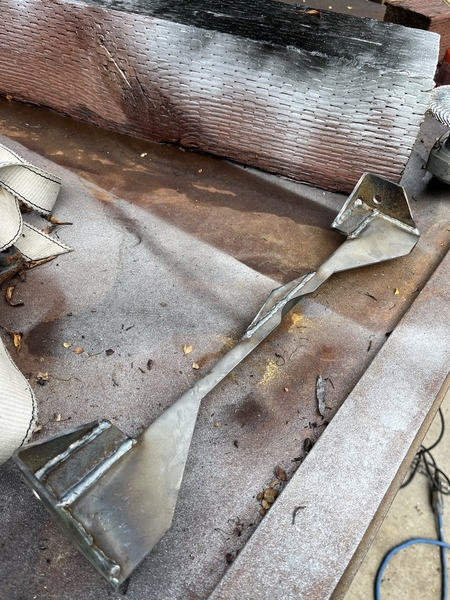
Attachments
That's common with bump-steer shimming, Donny. Your mod looks nice. Alternatively, some redrill the frame holes for that rack-brace bracket- which on many '71s was not a factory part. It was actually developed by the West Coast prep shop Ford hired to get the cars ready for dealers, right off the boat. It was originally called the "Bill Stroppe bracket" and Ford picked it up for production. It's worth keeping- some guys leave it off and then have 'funny' steering.
Did you notice took a little bite of the cross brace for cooling pipe clearance and added some strength to the opposite side with a gusset? I just put a new gun on my mig, it really looks like I can weld. After shimming the rack down 3/8" or so, I wouldn't trust just the four bolts holding it into place, one of the four bolts failed on my car.I think the Bill Stroppe bracket was necessary for some extra piece of mind. That's a interesting bit of info. I further tested my car today after getting an legit alignment, my driveway toe job was off ten miles but, my camber was very close. The more I drive this car the more I like it. It drives, shifts and brakes pretty dad gum good for a old car. I think I'm done sorting it out, it will idle all day with the A/C on and then start right back up like a normal car. The Pantera is a cool car in my opinion. I'm interested in trading for a project car or two. I like Mopars, early, early Z 28s, Trans Ams, GTOs , AMXs or ? I'm just throwing it out there. My 70 Hemi Challenger project is almost done so, I need to keep busy. BTW Boss I like the way you explain things so mentally handy-caped people like me can understand, sometimes I'm dumber than a box of rocks and I say such stupid things.
By stupid things, do you mean
“I’m interested in trading……”
😎✌️
Larry
I do stupid stuff on a daily basis. Sometimes I shoot myself in the foot making trades and sometimes I do OK. I get bored with same stuff, I like new challenges. I'm like a tweeker without the Meth except after ripping something apart I put it back together.
Donny, if you need a new challenge, get into fixing and operating old computers . Some you can get free. Once you get them to run, the second part is to get them to run on the Web. All the big mfgrs routinely drop support, then they actively design new ones so the old ones cannot be used even when 'fixed'. No backward-compatibility. They call this 'creating a market'.
Supposedly, some old Ferrari and other EFI race cars are relatively cheap because they once used proprietary software in their controllers. So unless you get the car, the team computers and their modified software, the cars are static displays even if in running condition.


